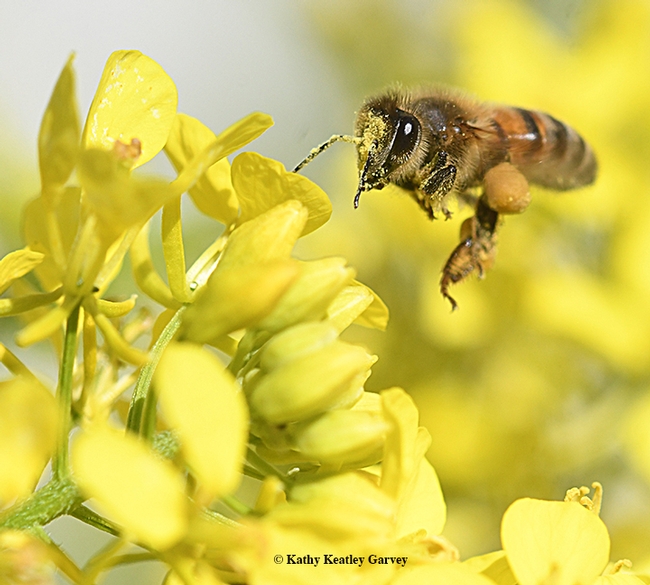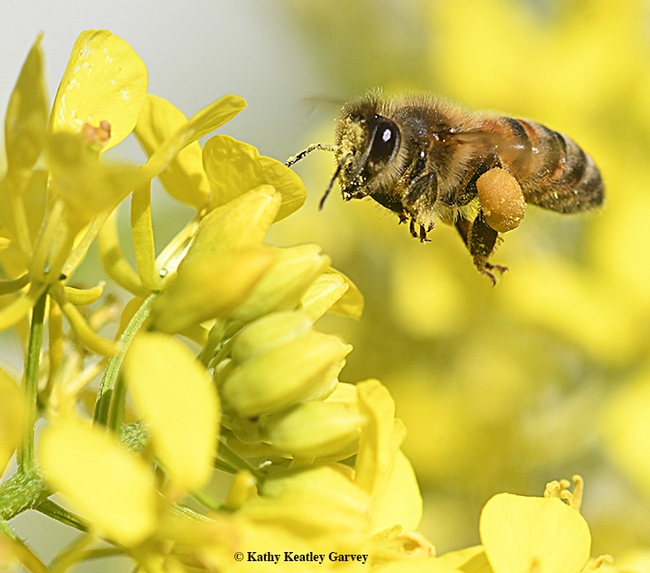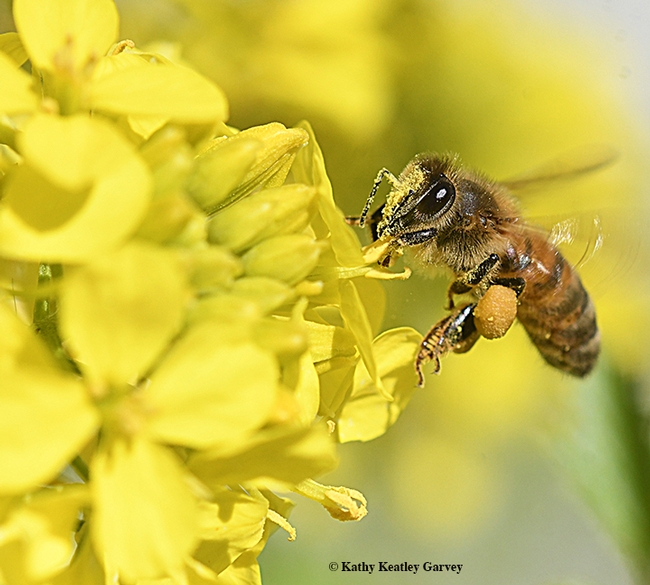All hail the honey bee!
It's an immigrant, like almost all of us, except for the Native Americans.
European colonists brought the honey bee (Apis mellifera) to what is now the United States in 1622. Specifically, they arrived at the Jamestown colony (Virginia). The Native Americans called the honey bee "the white man's fly." California had no honey bees until 1853 when a beekeeper brought his colonies to the San Jose area.
If you're like me, you can watch honey bees for hours.
Pull up a chair near a bee-buzzing event, watch them forage, and photograph them.
Pardon me, Ms. Bee, is that mustard on your head?
Yes, indeed.
It's bee-utiful to see golden pollen dusted all over their bodies from head to thorax to abdomen. Then there are those immense balls of golden pollen that weight them down and hinder their flight.
I took these images with a Nikon D500 with a macro lens, 200mm. The settings: 800 ISO, f-stop 8, and shutter speed, 1/2500.
Attached Images:

A honey bee, her head and antenna covered with mustard pollen, heads for more pollen in a bed of mustard in Vacavilel, Calif. (Photo by Kathy Keatley Garvey)

Like a race horse, this bee seems to be bolting toward the finish line, a mustard blossom. (Photo by Kathy Keatley Garvey)

Thar's gold in them thar hills--and gold pollen on her head, antennae, and thorax, not to mention the balls of pollen. (Photo by Kathy Keatley Garvey)